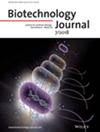Impact of Eco-Friendly Surfactant Structure and Class on Enveloped Virus Inactivation
Abstract
Background
Sustainable and effective strategies for virus inactivation are crucial for ensuring the safety and quality of biological products. The European Union's (EU) 2021 ban on Triton X-100 for viral inactivation in biomanufacturing has pushed the field to find sustainable alternatives with equal effectiveness. We aim to increase the sustainability of biopharmaceutical production by ensuring the effectiveness of eco-friendly surfactant-mediated virus inactivation by comparing the antiviral efficacy of Triton X-100 to glucosides and amine oxides.
Results
Surfactants were evaluated for antiviral efficacy against herpes viruses, SuHV and HSV, and the retrovirus XMuLV. The surfactants demonstrated equivalent or superior inactivation efficacy compared to Triton X-100. Herpes viruses were inactivated similarly with all surfactants. For XMuLV, surfactants with longer alkyl chains achieved maximum log reduction values (LRV) at 1x CMC, outperforming Triton X-100, which required 2x CMC for comparable efficacy. Surfactants with bulky headgroups, such as LAPAO, showed lower efficacy against XMuLV. At a salt concentration of 2 M ionic strength, the antiviral efficacy of Triton X-100 and TDAO decreased for the herpes viruses. Variability in inactivation was observed among the surfactants at 0.5x CMC, indicating that surfactant characteristics influence their antiviral performance below CMC.
Conclusions
Adding salt enhanced the antiviral efficacy of surfactants by lowering their CMC while maintaining consistent virus inactivation. Among the surfactants tested, the glucoside with a longer tail, n-nonyl-β-D-glucoside (NG), emerged as the most robust and could function as an eco-friendly surfactant for virus inactivation in bioprocessing. For NG, virus inactivation was independent of all variables tested.


 求助内容:
求助内容: 应助结果提醒方式:
应助结果提醒方式:


